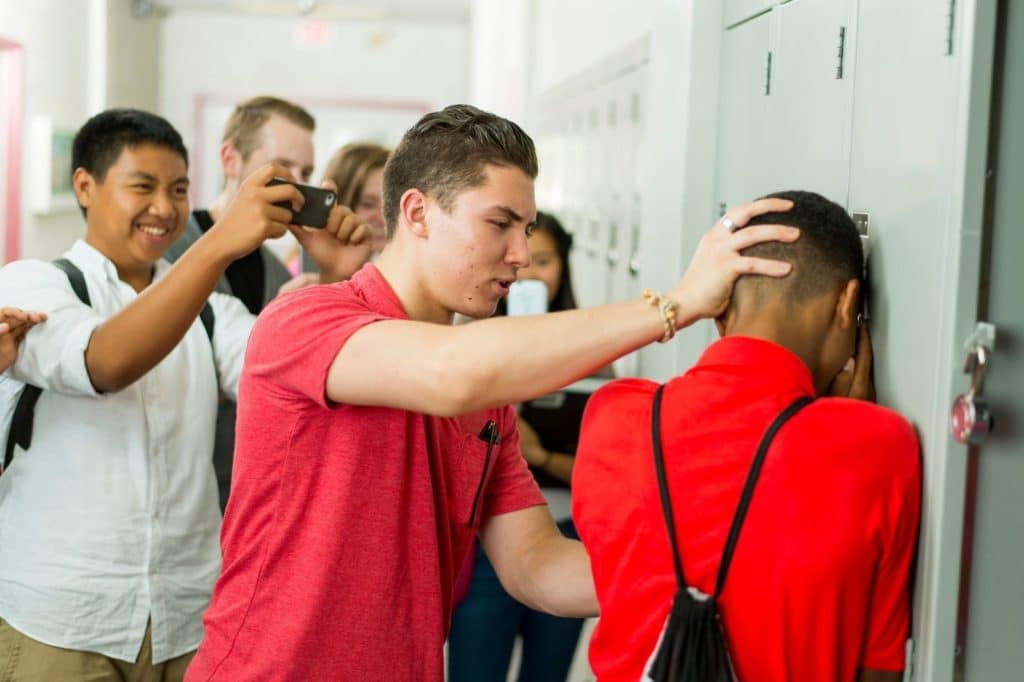One afternoon a student comes to you visibly upset and tells you that one of her classmates called her a mean name. She tells you that she wants to go to the office to call her parents so she can go home early. She tells through tears that she is afraid of what her classmate will call her when she sees her in the hallway again. Is she being bullied? Or is she just being oversensitive and needs to “get over it”?
Depending on who you talk to, you will likely get a variety of responses. Some say that children are too emotionally fragile today and need to “toughen up,” because kids giving each other a hard time is just part of growing up. Others say that bullying is a very real problem and needs to be taken seriously and addressed immediately. Which viewpoint is more accurate? It turns out that the answer might include a bit from both of these perspectives.
First of all, bullying is unfortunately not a rare occurrence, especially for school-aged children. In fact, in your time as an educator, you’ve probably witnessed bullying behavior both inside the classroom and outside (in the hallways, inside the classroom, before and after school, etc.). About 20% of students between the ages of 12 and 18 reported experiencing bullying. The most common reasons a student is bullied include because of their physical appearance, race/ethnicity, gender, disability, religion, or sexual orientation. And bullying doesn’t just happen on campus. In fact, 15% of those who reported being bullied said it happened online or through text messaging, with bullying being most common in middle school followed by high school. That number has doubled in the past 13 years (growing from 18% to 37%).
Common Reasons Students Are Bullied
Bullying also affects students differently based on a variety of characteristics. For example, while males reported a high frequency of being physically bullied, more females report being bullied through rumors or by being excluded from activities. Additionally, students are often at an increased risk for bullying if they experience a disability, including:
- Learning disabilities
- Autism spectrum disabilities
- Emotional disorders
- Behavioral disorders
- Health impairments
- Speech or language impairments
Students who identify as LGTBQ report experiencing higher rates of bullying, with 70.1% reporting being verbally bullied and 28.9% reporting being physically bullied because of their sexual orientation. And 48.7% said they were victims of cyberbullying.
How Bullying Can Affect a Student’s Mental Health
There is a great deal of research that shows a link between being a victim of bullying and declining mental health. For example, The National Bullying Prevention Center has found that those who are victims of bullying are put at an increased risk for depression, anxiety, sleep difficulties, lower academic achievement, and dropping out of school. They are also more likely to report a negative effect on their relationships with family and friends, schoolwork, physical health, and self-image. Those who are bullied are also twice as likely as their peers to report headaches and stomachaches. Additionally, those who bully others have an increased risk for substance abuse, academic issues, and experiencing violence as they continue to age.
Researchers have also identified a link between being bullied and suicidal thoughts or intent. While being bullied does not cause someone to have suicidal thoughts or intent, students who are bullied are more likely to report higher levels of suicidal thoughts or intent than their peers who are not bullied.
Differentiating Between Bullying and Uncomfortable Situations
Bullying is a widespread issue and clearly has negative effects on students, their mental health, and their families, according to these research findings. The challenge is differentiating between bullying and uncomfortable or challenging situations that don’t fall under the umbrella of bullying. Stop Bullying defines bullying as a situation that includes the following three characteristics:
- Unwanted aggressive behavior
- Observed or perceived power imbalance
- Repetition or high likelihood that the bullying behaviors will be repeated
And the research supports these criteria. For example, students aged 12–18 who reported being bullied said they thought those who bullied them:
- Had the ability to influence other students’ perceptions of them
- Had more social influence
- Were physically stronger or larger
- Had more money
When a situation includes the three criteria above, the student is likely a victim of bullying. If the situation does not meet these criteria, it may be an uncomfortable and challenging situation. Knowing the difference between these two can help to emphasize the seriousness of bullying while still supporting and empowering the student to respond in a healthy way to how they are being treated.
In a Washington Post article, author and school director Branden Bell observes that parents are often quick to label an emotionally painful or challenging event for their child as bullying because it provides “a narrative structure with a clear-cut villain and victim.” While their intentions are meant to be helpful, labeling an experience as bullying can unintentionally remove the sense of agency from the student instead of empowering them by assigning them the victim role. Bell encourages parents (and educators) to foster a child’s emotional development and resilience by asking questions to help them realize they have a choice in the way they respond to the bullying or a challenging-but-not-bullying situation.
You Can Help Raise Awareness About Bullying
As an educator, you can play a role in raising awareness about what bullying is and isn’t and how to respond accordingly in an empathic and empowering way. But how do we raise awareness of bullying and the damage it can cause while simultaneously helping students become emotionally resilient?
Researchers say that bullying prevention that addresses the many different facets of bullying is the most effective, while “zero-tolerance” policies are not. Additionally, research has found that adults can play a preventive role with bullying by modeling kindness and respect and encouraging children who are bullied to seek help.
Students who have been bullied have shared that teachers have been most helpful when they listen, check in, and give advice and that teachers have been most unhelpful when they tell students to figure it out on their own, blame the victim, or ignore it. Students often feel alone when they are a victim of bullying behavior, and, as an educator, you can help empower them and increase their resilience by checking in when you notice any potential signs of bullying, listening when your students come to you, and giving advice when appropriate.










